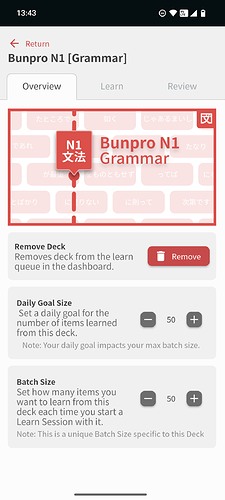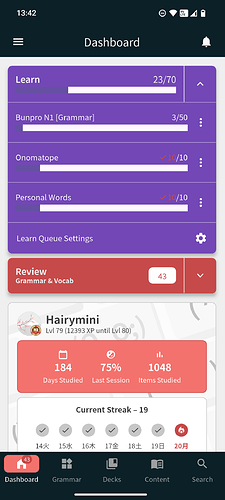Hello everyone!
I have tried the trial for Bunpro for about a month now and am really liking it. While I like the customizabilty, it can also feel a bit intimidating in how many different options there are.
How do you usually review grammar and vocab? Hints off, and trying to read the sentence, or just checking the translation/hint (Or something in between) ?
Furthermore, does anyone have any tips regarding the Genki decks? Do you just finish a chapter in Genki and then immediately add it into the reviews, or do you set a daily amount, adding things for review at a slower rate than your textbook progress? I’ve used the offical grammar and vocab decks with 2 new grammar points and 8 words each day but got the first Genki book yesterday. I’m also using Wanikani and tried the integration, so now I have 250+ reviews to catch up to lol




 i can no longer handle 20 vocab points every day
i can no longer handle 20 vocab points every day
